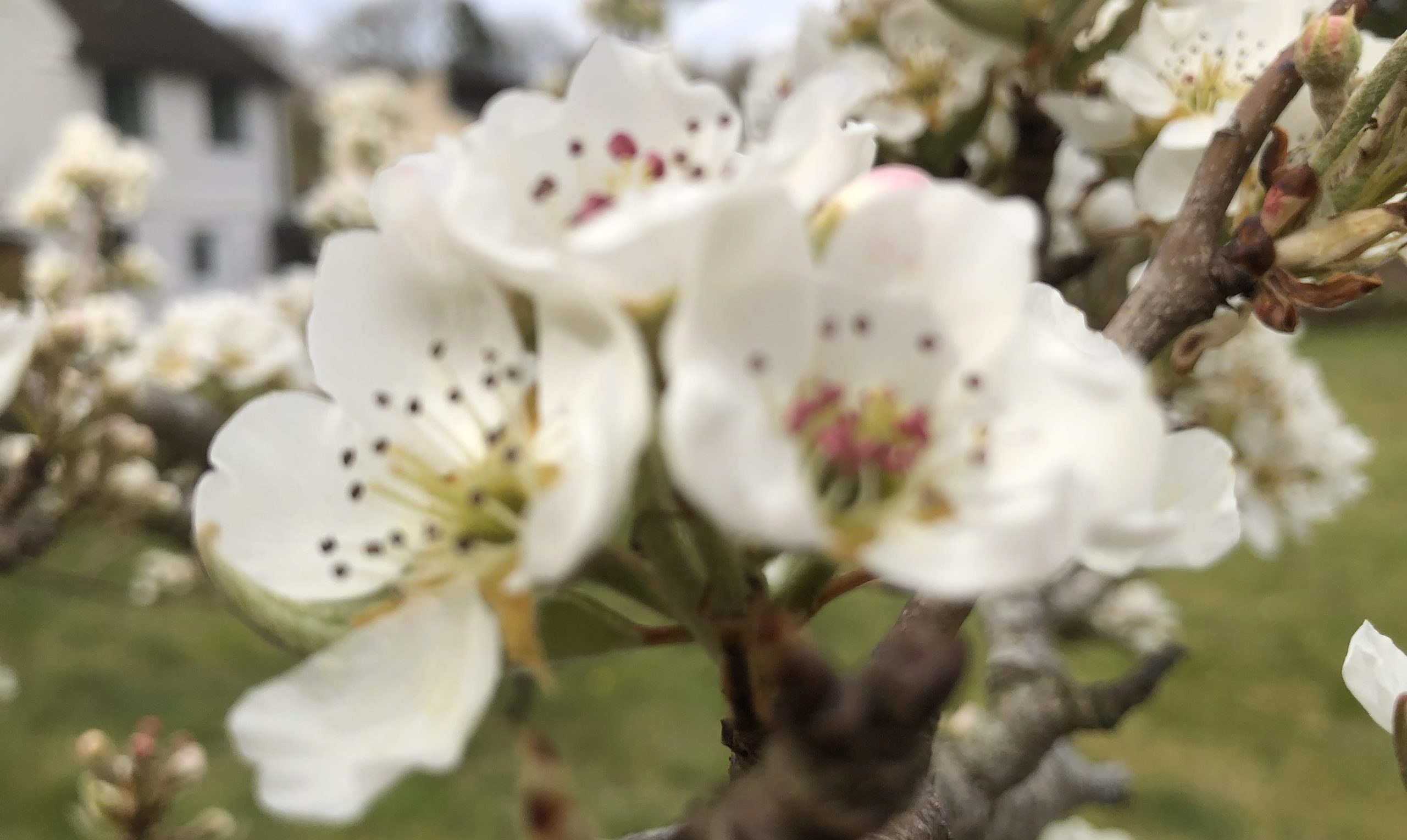 Richard Armitage is a GP and Public Health Specialty Registrar, and Honorary Assistant Professor at the University of Nottingham’s Academic Unit of Population and Lifespan Sciences. He is on twitter: @drricharmitage
Richard Armitage is a GP and Public Health Specialty Registrar, and Honorary Assistant Professor at the University of Nottingham’s Academic Unit of Population and Lifespan Sciences. He is on twitter: @drricharmitage
Allergic rhinitis – an IgE-mediated inflammatory disorder of the nose caused by exposure and sensitization to allergens such as house dust mite, moulds and animal dander – has long been trivialized by those it does not afflict, including the healthcare professionals that care for those it does.1 The typical symptoms are of sneezing, nasal itching, discharge (rhinorrhoea) and congestion, and often lead to troublesome associated symptoms of the eyes, sinuses, middle ear, nasopharynx and lower airways,2 often severely harm quality of sleep, home and social life.3
Allergic rhinitis is a common presenting problem in UK primary care, and has increased in prevalence…
These impose substantial economic harms through impaired attendance and productivity at work and school.4 While perennial rhinitis occurs throughout the year (commonly caused by house dust mites and domestic pets), and occupation rhinitis is triggered by exposure to allergens in the workplace (including flour, wood dusk and latex),5 seasonal allergic rhinitis occurs at specific and predictable times of the year, and is also called hay fever when triggered by pollen released by trees in spring, grass at the end of spring and beginning of summer, or weeds from early spring to late autumn6 (the term was first used in 1829 when its symptoms were mistakenly thought to be triggered by hay).7
Allergic rhinitis is a common presenting problem in UK primary care, and has increased in prevalence in recent decades8 such that 10-15% of children and around 25% of adults experience allergic rhinitis symptoms of varying severity.2 This trend is largely driven by rapid increases in the prevalence of hay fever, which now affects around 40% of Europeans at some point in their lives.9 This recent trend is strikingly revealed by the increase in prescribing of fexofenadine hydrochloride – used to control severe symptoms of allergic rhinitis – from GP practices in England over the previous five years. Monthly prescribing for this medication peaks each year in June (reflecting the seasonal burden of hay fever symptoms in early summer time), and has increased by 62.9% from 346,558 total prescriptions in June 2017 to 564,597 total prescriptions in June 2021 (latest data available).10 The economic costs for GP consultations regarding hay fever are estimated to amount to tens or even hundreds of millions of pounds each year in the NHS alone, while the substantial impact of hay fever on the productivity of those working in primary care themselves has even been estimated to exceed that caused by the burden of hypertension and type two diabetes.11
The economic costs for GP consultations regarding hay fever are estimated to amount to tens or even hundreds of millions of pounds each year in the NHS alone
Unfortunately, these trends are predicted to continue and even exacerbate in the coming decades due to a multitude of impacts mediated by climate change. Since the concentration of, and duration of exposure to, plant pollen is proportional to the risk of sensitization to those allergens, the arrival of invasive pollen allergens, increased plant growth, and longer growing seasons expected to be triggered by climate change are likely to further increase the prevalence of hay fever symptoms9 (for example, the pollen count from invasive ragweed species is predicted to quadruple, and thereby induce severe allergic disease in susceptible individuals, in Europe by 2050).12
Along with the impaired quality of life, and implications to the educational and work performance of adults and children alike, a significant complication of allergic rhinitis (especially hay fever) is asthma. While these diseases often co-exist (some 15–38% of people with allergic rhinitis also have asthma),13 allergic rhinitis is itself a recognised risk factor for the development of asthma, and even short-term pollen exposure is known to significantly increase the risk of triggering asthmatic symptoms.14 Crucially, those with severe allergic rhinitis symptoms are four times more likely to have poorly controlled asthma than those with controlled disease.2
The burden of hay fever is substantial and increasing. Encouragingly, this manageable condition provides an ample opportunity for GPs to make vast improvements to many people’s home, work and social lives through the recognition and careful management of its debilitating symptoms. As such, as we progress through peak hay fever season this year, don’t turn your nose up at seasonal allergic rhinitis.
References
- D Price et al. The hidden burden of adult allergic rhinitis: UK healthcare resource utilisation survey. Clinal and Translational Allergy 2015; 5(39). DOI: 10.1186/s13601-015-0083-6
- GK Scadding et al. BSACI guideline for the diagnosis and management of allergic and non-allergic rhinitis (Revised Edition 2017; First edition 2007). Clinical and Experimental Allergy 2017; 47(7): 856-889. DOI: 10.1111/cea.12953
- World Allergy Organization. White Book on Allergy: Update 2013. 2013. https://www.worldallergy.org/UserFiles/file/WhiteBook2-2013-v8.pdf [accessed 26 June 2022]
- GK Scadding. Optimal management of allergic rhinitis. Archives of Disease in Childhood June 2015; 100: 576-582. DOI: 10.1136/archdischild-2014-306300
- D Ryan et al. Primary care: the cornerstone of diagnosis of allergic rhinitis. Allergy 2008; 63(8): 981-989. DOI: 10.1111/j.1398-9995.2008.01653.x
- J Barr et al. Allergic rhinitis in children. British Medical Journal 2014; 349: g4153. DOI: 10.1136/bmj.g4153
- Karen Reid. The story of an allergy: coming to understand hay fever. Royal College of Physicians 2016. https://history.rcplondon.ac.uk/blog/story-allergy-coming-understand-hay-fever [accessed 26 June 2022]
- B Lipworth et al. An algorithm recommendation for the pharmacological management of allergic rhinitis in the UK: a consensus statement from an expert panel. NPJ Primary Care Respiratory Medicine 2017; 27(3): 1-8. DOI: 10.1038%2Fs41533-016-0001-y
- University of East Anglia. Pollen predictors. https://www.uea.ac.uk/research/explore/pollen-predictors [accessed 26 June 2022]
- OpenPrescribing.net, Bennett Institute for Applied Data Science, University of Oxford, 2022 (using ‘Fexofenadine hydrochloride [0304010E0AA]’
- B de la Hoz Caballer et al. Allergic rhinitis and its impact on work productivity in primary care practice and a comparison with other common diseases: the Cross-sectional study to evAluate work Productivity in allergic Rhinitis compared with other common dIseases (CAPRI) study. American Journal of Rhinology & Allergy 2012; 26(5): 390-394. DOI: 10.2500/ajra.2012.26.3799
- L Hamaoui-Laguel et al. Effects of climate change and seed dispersal on airborne ragweed pollen loads in Europe. Nature Climate Change 2015; 5: 766–771. DOI: 10.1038/nclimate2652
- JL Brozek et al. Allergic Rhinitis and its Impact on Asthma (ARIA) guidelines – 2016 revision. Journal of Allergy and Clinical Immunology 2017; 140(4): 950-958. DOI: 10.1016/j.jaci.2017.03.050
- MA Kitinoja et al. Short-term exposure to pollen and the risk of allergic and asthmatic manifestations: a systematic review and meta-analysis. BMJ Open 2020; 10: e029069. DOI: 10.1136/bmjopen-2019-029069
Featured image: Tree blossom, taken by Andrew Papanikitas, 2022






